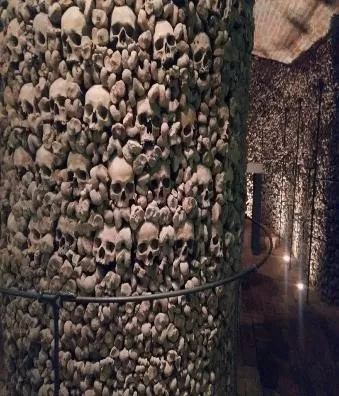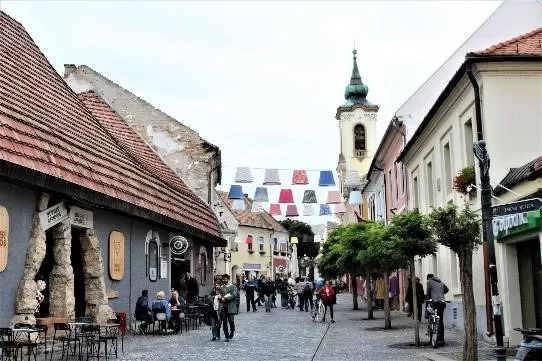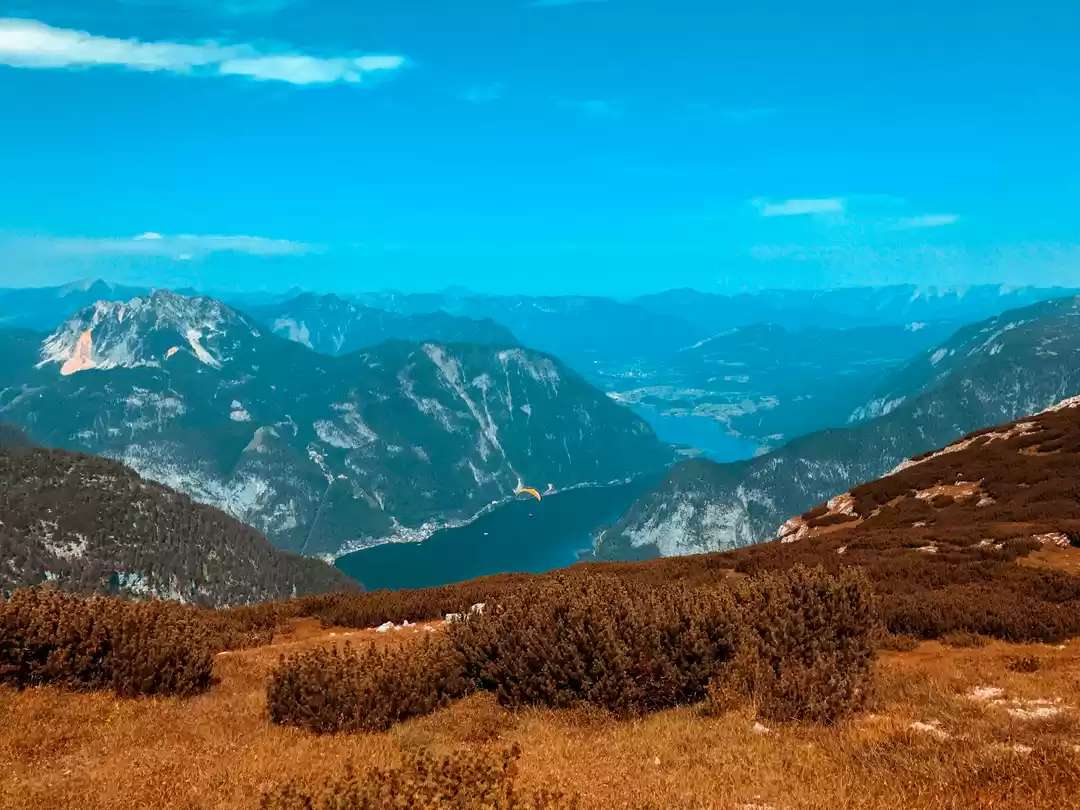After a long and tiring journey of around 20 hours, thanks to our tight budget combined with numerous stops and layovers (Cons of being in a city with no airport), we finally landed at our first destination of Praha International Airport with sleepy eyes, but excitement at the zenith.
Prague, famous for its architectural wonders, the capital of Czech Republic is a marvel in its own. After checking into our cute little apartment (Airbnb) at the heart of the city, we made our move to the Old Town Square, featuring buildings with various architectural styles like Baroque, Gothic also where the famous Astronomical Clock tower is situated, the oldest one in operation.
We halted for a day here staying at a hostel, Jacob Brno, strategically located at the center just behind the iconic Cathedral of St Peters and Paul’s. We spent the day at leisure, mostly walking around or taking a tram ride and visiting the iconic places like Cathedral, Old town hall, Ossuary, Nuclear shelter (Bunker 10Z) Spliberk Castle and the farmers market.



5th Day we checked out from Brno and took our bus to Budapest, capital of Hungary, a city divided on the two banks of river Danube and connected by the Chain Bridge. We had booked an uber cool apartment in the heart of the city through Airbnb (convenient and economic type of accommodation in Europe) for the next 3 days. We spent the first day at leisure after the long bus ride and headed to Simplaz Kert for the night, the partying hub of the city. Next day the weather was a complete let down but with limited time in hand we couldn’t just let our spirits die, with jackets and mufflers on and with umbrellas to save from rains we headed to the Central Market (the nearest spot from our Airbnb) for some shopping as well as photography. Right after, we made way to the Danube Promenade for the Shoes on the Danube, a memorial commemorating Jews shot here by the Nazis during World War II. Next we headed to Castle Hill, and although could not enter the Buda castle due to closure on the day but spent enough time around the Fisherman’s Bastion which exhibits Neo-Romanesque architecture and spectacular views of Budapest. Later during the day we let our sore muscles(from all the walking around) relax by spending an hour or two in one of the most iconic and historical thermal baths of Budapest , The Gellert Bath, also known as Palace of Baths. Later in the evening we enjoyed a cruise on the river Danube to enjoy the fascinating sights of the historical city at night.



On the last day at Budapest, we planned to go out to a nearby small town, a 1 hour train ride away to Szentendre. Without much expectations we alighted the train and scouted for a tourist map and slowly walked our way inside the town to be pleasantly surprised by the amazing colourful town centre, teeming with colourful eateries, small wine shops, decorated alleys, window sills with coloured flowers . After spending the day at Szentendre we headed back to Budapest via a ferry, enjoying the beautiful countryside and the cool breeze.

On the first day we roamed around the Main Market Square with the famous St Mary’s Basilica and the Cloth hall which is without a doubt a must visit if you want to buy Polish souvenirs.


After a deeply saddening day, on the last day of our trip, we decided to visit the Wawel Castle and spend the day at leisure roaming around the city at our own pace. The last day turned our spirits cheerful again with the beautiful shining weather.

Cobbled roads, roadside eateries, street entertainers; all surrounded by various historic monuments, is quite a treat for the eyes. Moving around the city on foot is the best way to enjoy and experience any European city. So, we continued our day exploring other parts of the city along the river Danube.


We had 3 days planned in Prague and we spent our next two days exploring the Prague Castle, Vysehrad, Jewish Quarters, Charles Bridge, Petrin Hills and other the various street markets partly on foot and partly using the public transport day pass. There are various transport passes available in almost all European cities with varied timeframes and combinations suited for all. As per our experience this is the most convenient way of exploring the city along with loads and loads of walking.

On the 4th day we boarded the train to Brno, the second largest city of Czech Republic and referred as “Little Vienna”. Brno gives a different flavor with its beautiful architecture and international atmosphere.
The next day, we checked out of Budapest and took a flight for our last and final destination, Krakow, the second largest and one of the oldest city of Poland known for its well preserved medieval core and Jewish quarter. We had booked ourselves a hostel room near the Main market square, one of the top places to be visited in Krakow.
The second day was the highlight of the entire trip, as this day we had our tour booked to Auschwitz-Birkenau Camp. This camp played an important role in the history of the Second World War during the Nazi regime. There are over 150 buildings and about 300 ruins of the former concentration camp. Also, the fences, ramps and roads have been maintained in their original form. The museum contains a large collection of personal objects that belonged to the prisoners – such as suitcases, shoes, glasses and pieces of clothing. Undoubtedly, the Auschwitz-Birkenau Museum is a place that one must visit during their stay in Krakow, however be ready to be drowned in emotions. The pictures below will speak for themselves.
Finally the day arrived when we had to start our return journey from the much awaited, much planned European Holiday, back to our work place.
Some Important Info : In case of self planning without help from any agent.
1. Visa : Schengen Visa applied from nearest City. Visa needs to be applied atleast a month before, which means all bookings and reservations have to be done prior to that. Visa to be applied through the embassy of the country of entry in Europe. In our case it was Czech Republic.
2. Currency : Exchange Dollars or Euros from India and convert it to the local currency (east European countries have their own currency) after reaching there. A little Googling and some research on ground can help in getting the best rates of exchange.
3. Accommodation : Airbnb(entire apartment or a private room) and Hostels(have private rooms too) are always the more economic options as compared to hotels.
4. Travel : Public transport system in any European city is very convenient and economic. There are day passes with various options. Also moving around on foot as much as you can is highly recommended as that allows to see and experience a lot more.
Inter city travel(Trains or flights) is also quite pocket friendly if booked well in advance.
5. Sightseeing : A lot of research on the internet really helps to prepare a comprehensive list of places to visit. It’s recommended to use that list as a guiding factor rather than following it rigidly. Travel and see at your own pace, it’s ok to miss a few places, as that also gives a reason to come back sometime again.
6. Luggage : Travelling light is important. Look out at the weather forecast beforehand to help in packing and also leave enough space in baggage for shopping !!!



























